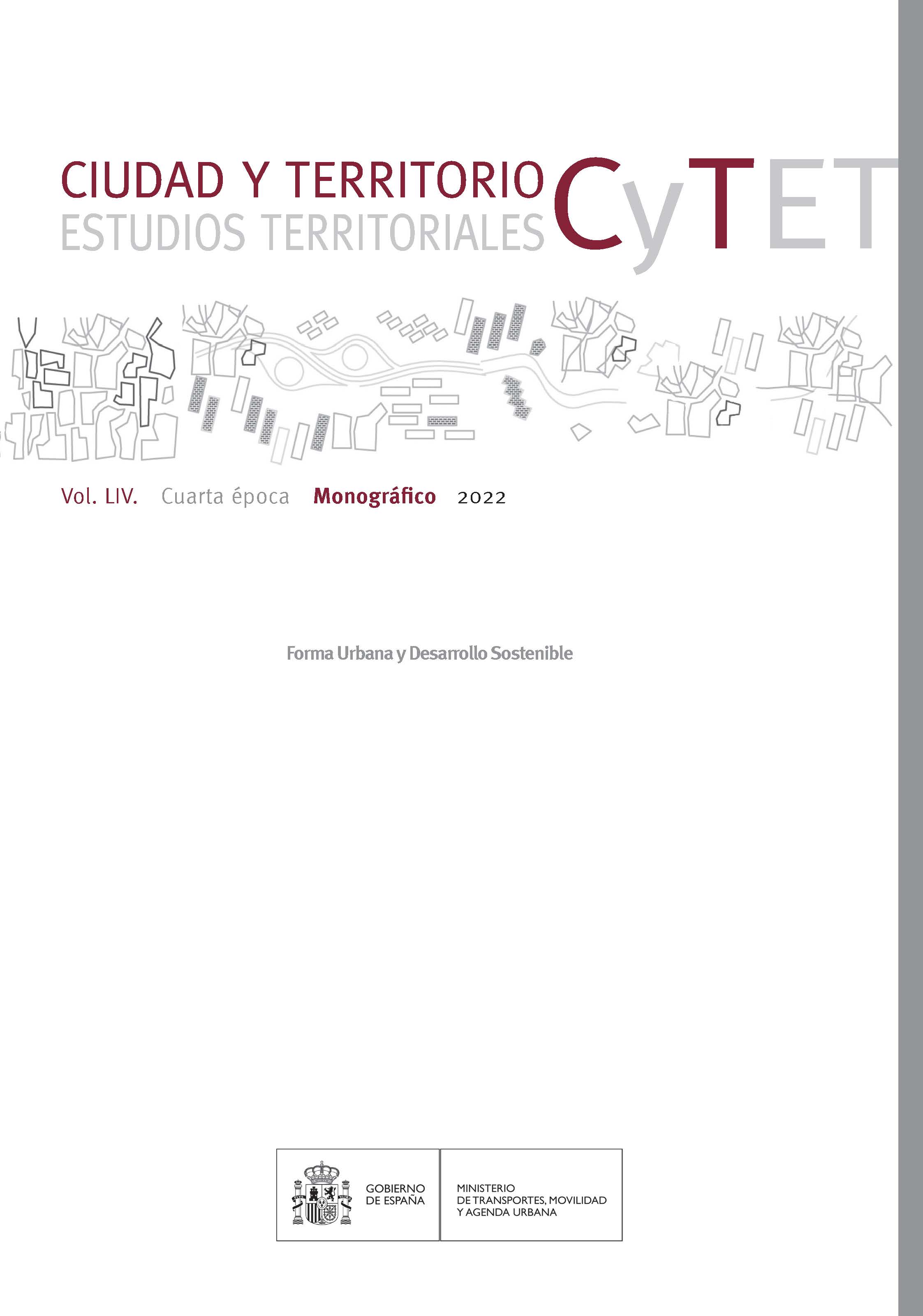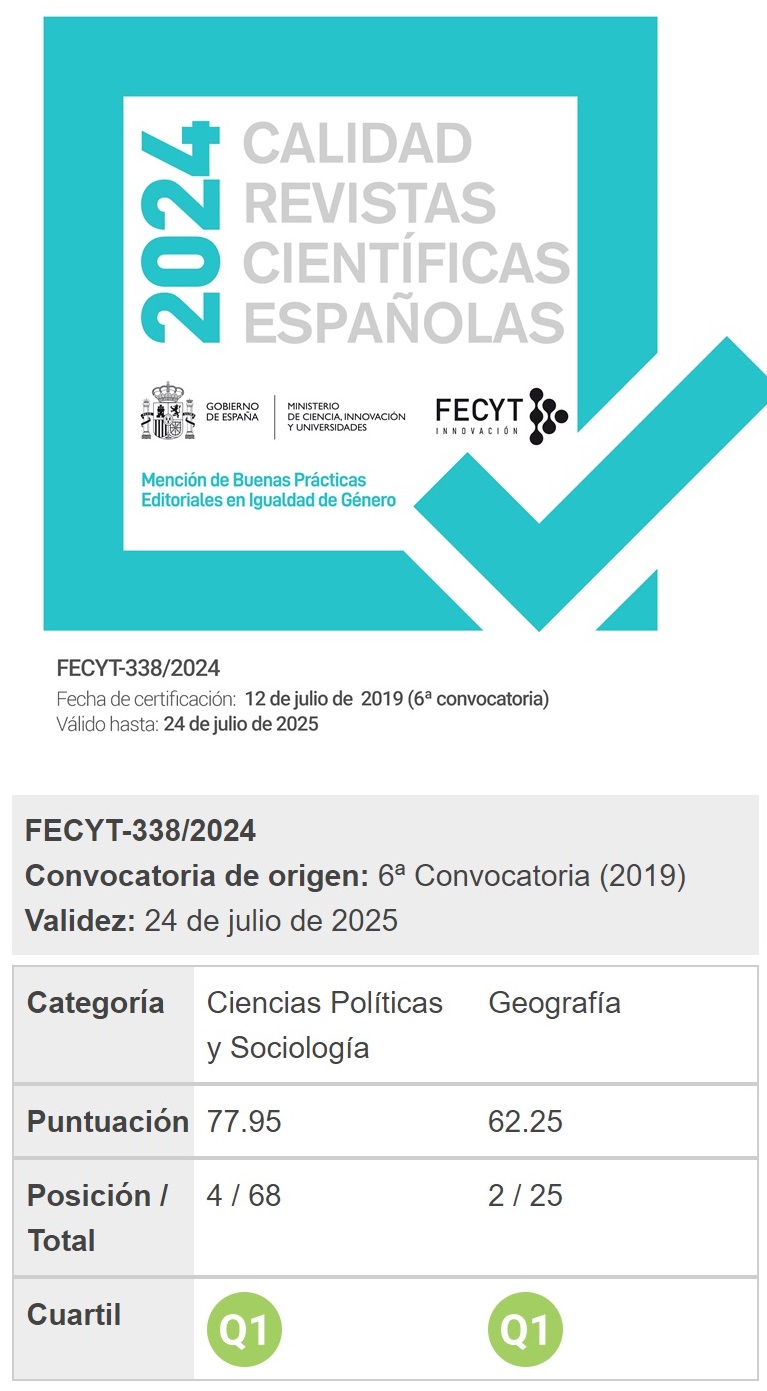La contribución del Big Data al estudio de la sostenibilidad de la forma urbana
DOI:
https://doi.org/10.37230/CyTET.2022.M22.1Palabras clave:
Sostenibilidad, Redes sociales, Datos geolocalizados, Forma urbana, Intervención urbanaResumen
La revolución de los datos masivos —Big Data— ha irrumpido con nuevas fuentes de datos y novedosas metodologías en el estudio de la ciudad. Entre estos datos sobresalen aquellos que están geolocalizados y, por tanto, ofrecen información precisa sobre los lugares de la ciudad en los que se generan o comparten; en este sentido, destacan los datos geolocalizados de las redes sociales. Esta información permite evaluar aspectos relacionados con la sostenibilidad de las ciudades y sus comunidades de acuerdo con los Objetivos de Desarrollo Sostenible—. A través de tres escalas de estudio —la ciudad, el barrio y el espacio público local— se abordan aquellas cuestiones que informan sobre: centralidad urbana, equilibrio de los distintos sistemas urbanos, densidad y distribución de actividades económicas y urbanas, presencia y preferencias ciudadanas y vitalidad en espacios públicos urbanos.
Descargas
Publicado
Cómo citar
Número
Sección
Licencia
Derechos de autor 2022 Pablo Marí-Ciriquián, Almudena Nolasco-Cirugeda, Leticia Serrano-Estrada

Esta obra está bajo una licencia internacional Creative Commons Atribución-NoComercial-SinDerivadas 4.0.
Sin perjuicio de lo dispuesto en la legislación vigente sobre Propiedad Intelectual, y conforme a la misma, el/la los/las autor/a/es/as que publiquen en CyTET cede/n a título gratuito, de modo no exclusivo y sin límite temporal al Ministerio de Transportes, Movilidad y Agenda Urbana los derechos para difundir, reproducir, comunicar y distribuir en cualquier formato actual o futuro, en papel o electrónico, la versión original o derivada de su obra bajo licencia de Creative Commons Reconocimiento-NoComercial-SinObraDerivada 4.0 Internacional (CC BY-NC-ND 4.0), así como para incluir o ceder a terceros la inclusión de su contenido en índices, repositorios y bases de datos nacionales e internacionales, con referencia y reconocimiento en todo caso de la autoría del mismo.
Además, al realizar el envío, el/la los/las autor/a/es/as declara/n que se trata de un trabajo original en el que se reconocen las fuentes que han sido utilizadas en su estudio, comprometiéndose a respetar la evidencia científica y a no modificar los datos originales para verificar o refutar una hipótesis de partida; que el contenido esencial del mismo no ha sido publicado previamente ni se publicará en ninguna otra obra o revista mientras esté en proceso de evaluación en la revista CyTET; y que no se ha remitido simultáneamente a otra publicación.
Los autores deben firmar un Formulario de Cesión de Derechos, que les será enviado desde la Secretaría de CyTET una vez se acepte su artículo para ser publicado.
Con el objetivo de favorecer la difusión del conocimiento, CyTET se adhiere al movimiento de revistas de Open Access (OA) y entrega la totalidad de sus contenidos a diversos índices, repositorios y bases de datos nacionales e internacionales bajo este protocolo; por tanto, la remisión de un trabajo para ser publicado en la revista presupone la aceptación explícita por parte del autor/a de este método de distribución.
Se anima a las/os autoras/es a reproducir y alojar sus trabajos publicados en CyTET en repositorios institucionales, páginas web, etc. con la intención de contribuir a la mejora de la transferencia del conocimiento y de la citación de dichos trabajos.








 Enlace a CyTET en Linkedin
Enlace a CyTET en Linkedin